Intro by Eothen “Egon” Alapatt | Interview by Josiah Titus | Photos by Eilon Paz
I’m not a fan of hyperbole, especially when it comes to records. Entire generations can misunderstand some of the best “insert-genre-here” albums. What’s regarded as “the best record of all time” by one person might be seen as a pedigreed relic with little historical importance by another. Such terms get watered down when they aim to describe record collectors. Lofty phrases like “deepest,” “best-schooled,” and “the Alan Lomax of…” get liberally attached to everyone from hobbyists to the life-long obsessed. The result is hyperbolic noise, which is a shame because what is left to say when it’s true?
There is one person I’ve met whom I feel compelled to use this language: Geoffrey Weiss. To me and many others, he is the world’s best record collector.
I heard about Geoffrey when I lived in Nashville in the ’90s. I was on the trail of funk and soul when I met David Forman. He introduced me to Barry Wickham, who told me about the legendary Geoffrey Weiss. Shortly after I moved to the Eastside of LA in 2001, I encountered Geoffrey at a backyard barbecue in Echo Park. He had a long beard and looked something like Gandalf. I was offered an introduction but declined. What the hell was I going to say to the Geoffrey Weiss? I would only make an idiot out of myself.
Some years later, when I had the opportunity to hang out with him, I realized my fears about looking like an idiot were unfounded. He isn’t the jaded, braggart type, though he easily could be. Instead, he is gracious, enthusiastic, and trustworthy.
His massive record collection has its own house adjacent to his actual house. When I saw a copy of Tintern Abbey’s “Vacuum Cleaner” sitting in its Deram sleeve on a table with a $1,000 price tag, I knew this wouldn’t be an average collection. “You’re lucky to own that,” I said. “It’s a spare,” he told me. He added that I could have it as part of a trade we were working on—a trade we negotiated for more than a year, punctuated by evenings filled with stellar bourbon and impressive beers. Evenings where the assignment—the trade—was pushed aside in favor of pursuing knowledge and enjoying listening to vinyl. But on that first visit, when I gasped at his spending decisions, no matter how great, he shrugged his shoulders and remarked that the record was better than a grand.
I have countless stories like that about Geoffrey. He’s not known as a funk or soul collector per se. Yet, he had the wherewithal to buy Marvin Whoremonger and doubles of the Southern University Jazz Ensemble Goes To Africa with Love LPs in the ’80s and ’90s simply because they intrigued him. He’s the guy who pulled the Stephen David Heitkotter LP out of the reject bin at A&M’s publishing division in 1986 and cemented its status as one of America’s great outsider rock albums. Weiss doesn’t need validation from other collectors or the ego of owning the rarest this or the most expensive that (though his collection is full of those things). He simply loves music and wants to share that love with others. Through the years, he has worked for major labels, helped find and promote important bands, and now spends time managing a young artist. Anyone gifted the opportunity to share a moment with him in his space, exploring his thousands of records, all of which he knows intimately, is in for—damn; here I go again—a singular musical experience.
–Eothen “Egon” Alapatt
“The Beatles, in particular, were a rare instance where something really great was also really popular. They galvanized young people all over the world and influenced music in ways that are still being felt.”
Do you remember your first record?
My first record was a spoken word reading of Wind in the Willows, but my first music record was Badfinger’s “Come and Get It.”
What kind of music did you hear growing up?
As a kid, I heard classical, show tunes, and Woody Guthrie from my parents; Keith Jarrett, Joni Mitchell, Motown, Simon and Garfunkel from my older sister; and the Beatles from everywhere. My parents had a stack of stuff they liked, but it wasn’t a collection.
The Beatles and British rock represent a sacred part of your record collection. What was it about rock during the Beatles era that excites you?
The Beatles, in particular, were a rare instance where something really great was also really popular. They galvanized young people all over the world and influenced music in ways that are still being felt. My collection of Beatles records is relatively small. I try to have an interesting copy of every single and album, but I don’t have the Swedish one of this and the “true first” of that.
British ’60s rock has always spoken to me, probably because I never got over hearing “I Am the Walrus” when I was five. I always felt that whatever magic had produced The Beatles had landed to some degree on The Hollies, The Zombies, Locomotive, and The Toggery Five. I remember when the first volume of Chocolate Soup for Diabetics came out. I was thunderstruck that a whole level of English ’60s music was still unknown to me.
Do you think of yourself as a record collector or simply as a music collector?
I am a music collector. Vinyl is an immersive experience closer to a concert than other listening options. It’s a commitment; you pay more attention, and there’s something tactile to the listening experience. Whether it actually sounds better or not is beside the point—to me, it certainly sounds different, and I like it better.
Who have been some of your mentors in record collecting? Who have you learned the most from?
Chuck Warner and Paul Major were two guys who knew their stuff inside and out when that was really hard to do. I learned a ton from Johan Kugelberg’s “Down the Rabbit Hole” mania and Ryan Richardson because of his surgical focus. That’s not all; Jeff Gold for his academic discipline, Gary Johnson and Bob Say for their deep wells of minutiae, and Bob Stanley for his unwavering focus on the art and history of songwriting. But the most important people to listen to are the young enthusiasts—you’ve got to keep that light on!
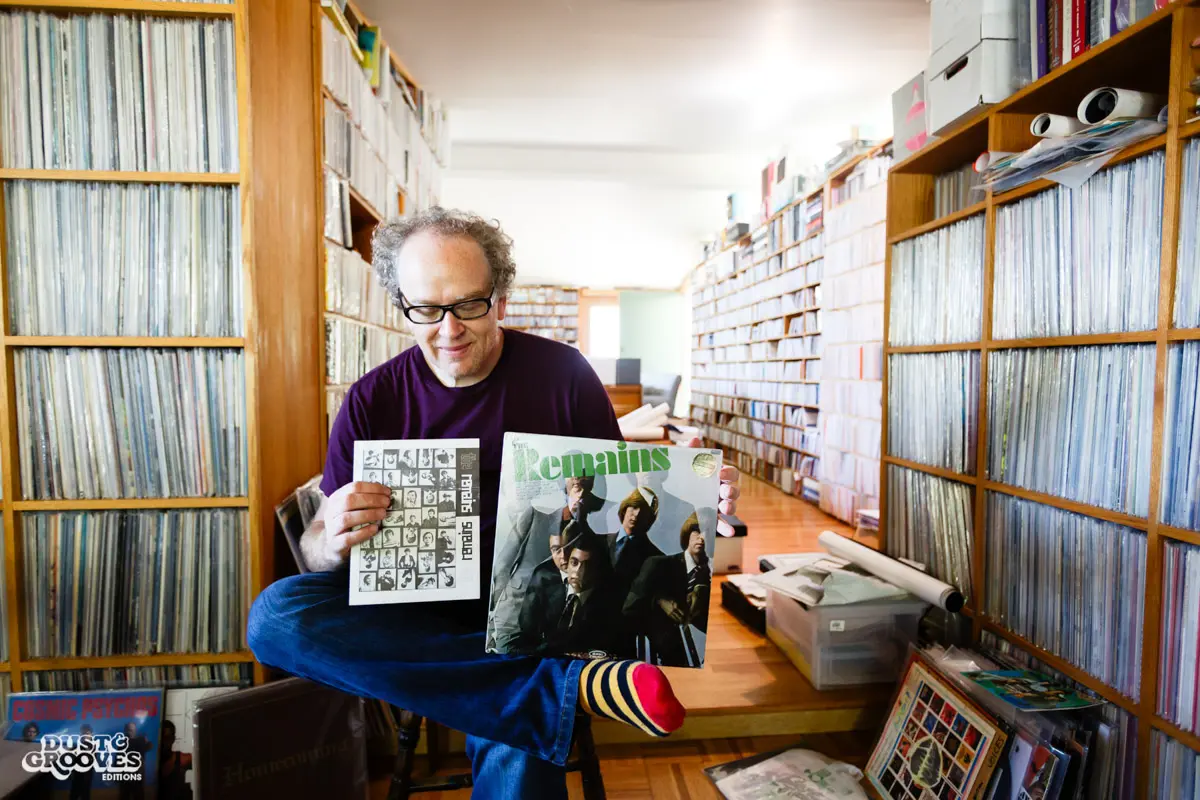
The Remains – Self-titled. “The Remains are an anomaly—perhaps the only ‘garage’ band full of great players. This copy of their only real album came with a flyer from their management company.”
“Whether it actually sounds better or not is beside the point—to me, it certainly sounds different, and I like it better.”
Favorite stores over the years? Current favorites?
My favorite store was Minus Zero/Stand Out Records. The legendary London stores run by Bill Allerton and Bill Forsythe. My best day of record shopping in a store was Joe’s Record Paradise in Silver Spring, Maryland. My current favorite store is whichever one I’m in, but special shout-outs to Rockaway, Freakbeat, and Permanent in Los Angeles, The Record Exchange in Salem, MA, Feeding Tube Records in Florence, MA, Toad Hall in Rockford, IL, R&B Records in Upper Darby, PA, End of an Ear in Austin, TX, Yesterday and Today in Rockville, MD, 99 Records in NYC, and Main Street Records in Northampton, MA. Too many to count!
Some record collectors are archivists; some are hoarders, some are fans, and some are musicians. There is a lot of overlap.
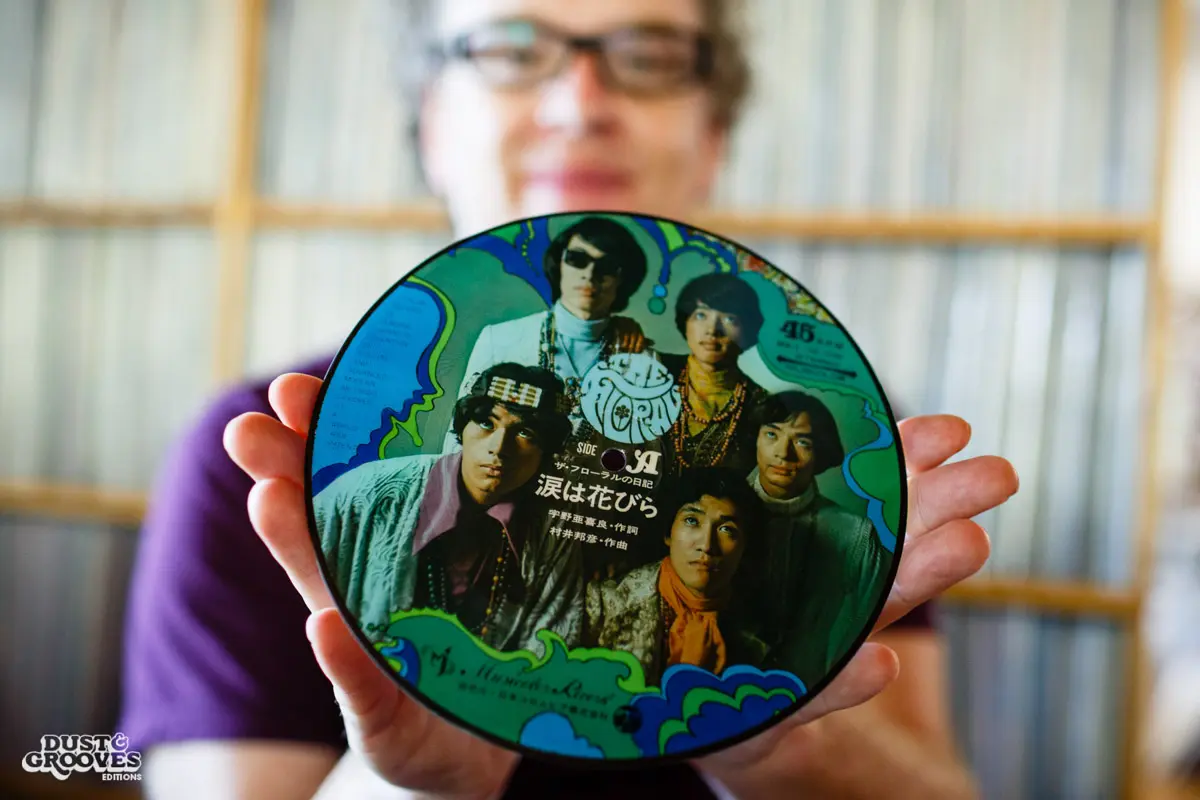
The Floral – “Diary of Tears Petals.” “My friend Bruce Milne had this amazing-looking Group Sounds record and didn’t play it at all. I played it and thought it was fantastic.”
“Records aren’t fun if you spend all the time looking for them instead of playing them.”
You have a large collection of acetates. Were these projects you were involved in as a producer? Things you’ve bought as a record digger?
I kind of hate acetates; they’re so delicate and usually play poorly. I own many projects I worked on, but the most fun records are old ones with otherwise unavailable music. I have cool ones by Blossom Toes, the Yardbirds, and Jackson C. Frank, and maybe the impressive ones are artists no one has ever heard of.
You introduced Light in the Attic Records to the music of Ray Stinnett, which led to them releasing his album. How did that come about?
About 15 years ago, a retired promotion man traded a big stack of A&M records to Rockaway. Among his test pressings was a two-record set that appeared to be unreleased. I played it, and it was obviously good. I bought it, and for a while, it was my own little secret. I knew nothing about it, but I had a hunch Matt Sullivan would like it. Fortunately, Ray was still around to tell his story.
Have you been involved in other releases or reissues?
Too many reissues to count, including Rhino, Light in the Attic, Numero Group, Mexican Summer, Matador, and many more. As for releases, I was an A&R and marketing executive for hundreds of labels.
How did your career in the music industry begin?
College radio, an obscure indie label (Throbbing Lobster in Boston), slightly less obscure indie label (Big Time), then to A&M.
What were some of the most memorable projects you worked on?
At A&M, I worked with Soundgarden and Matthew Sweet, who I suspected had great things in their futures. Also, Trip Shakespeare, which included songwriter Dan Wilson, with whom I’m still friendly.
At Warner Bros., it’s a really long list. I worked with My Bloody Valentine, Ride, Primal Scream, Dinosaur Jr., Sir Mix-a-Lot, Built to Spill, Green Day, The Muffs, Cibo Matto, Ice-T/Bodycount, American Music Club, Babes in Toyland, Pavement, Saint Etienne, You Am I, Mudhoney, The Flaming Lips, Boredoms, The Jungle Brothers, and many more.
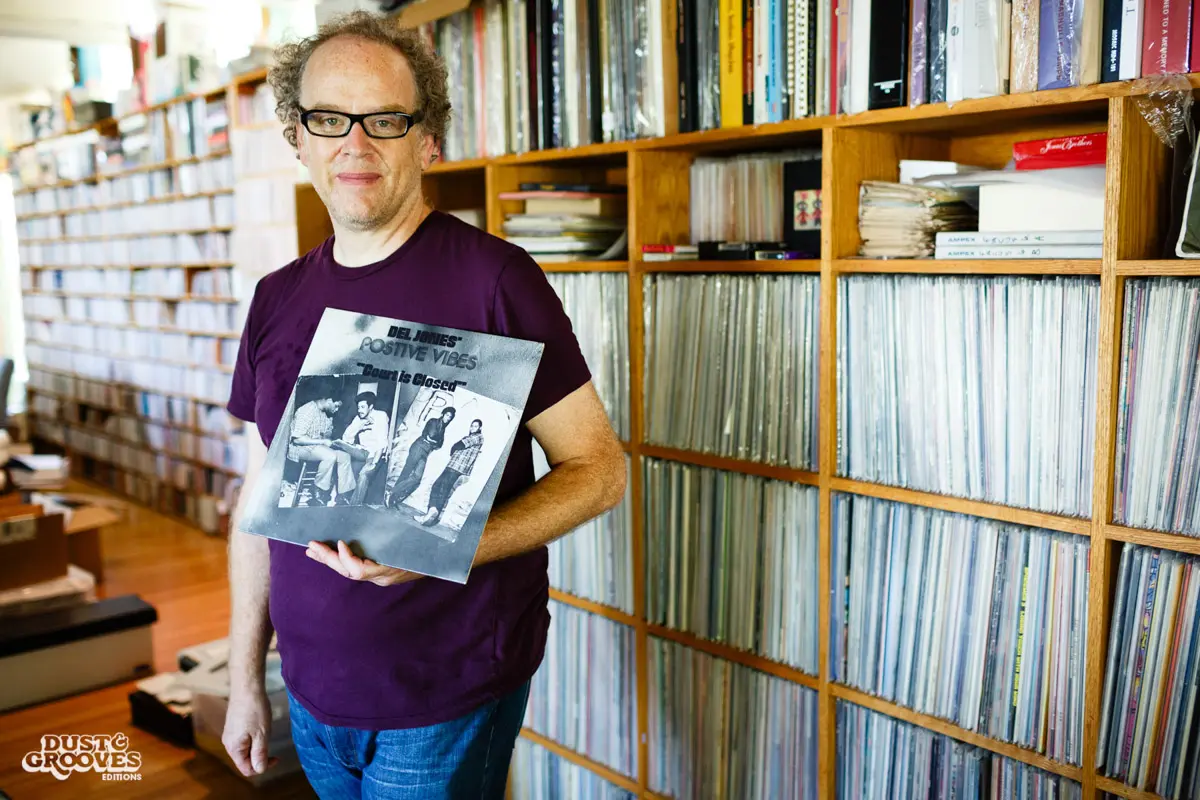
Del Jones’ Positive Vibes –Self-titled. “Psychedelic soul by a really angry black man. Magnificent music!”
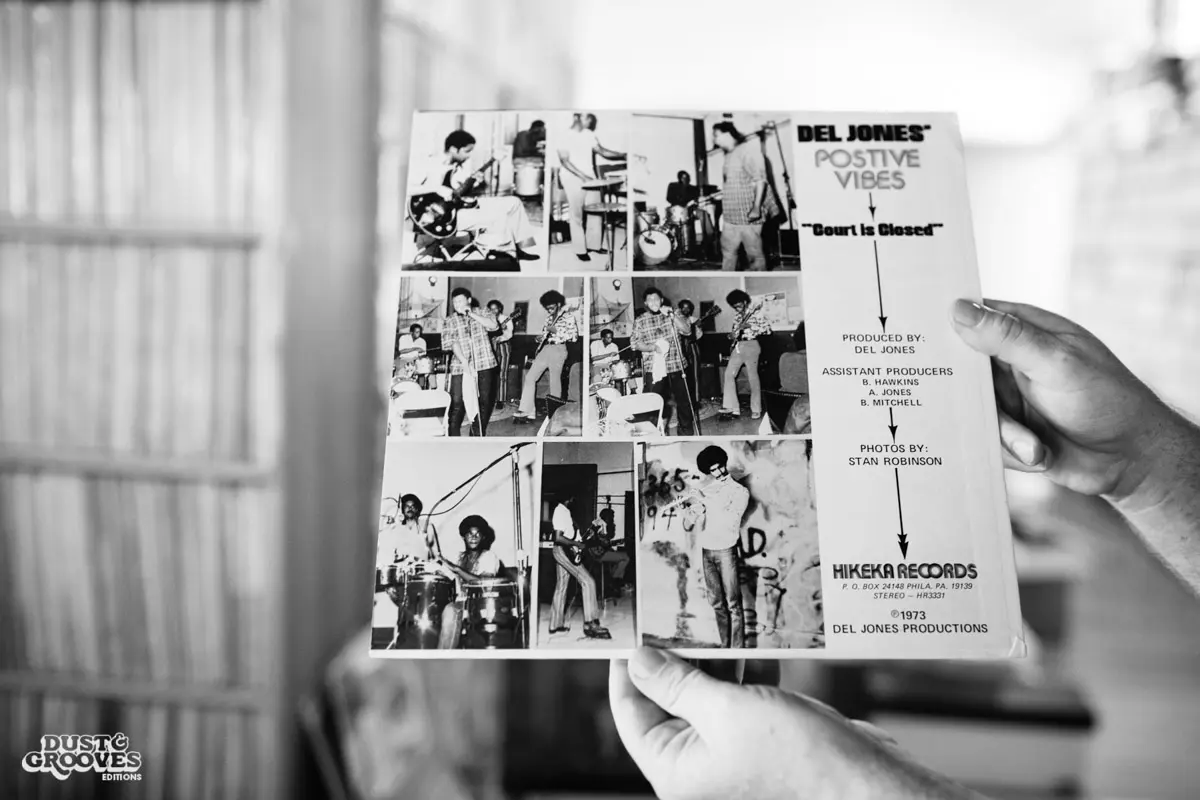
“From the lyrics to the music to the packaging, Positive Vibes captures a sense of time and place like few others.”
“I’ll bring home anything, but I’m ruthless about getting rid of things I don’t love. I have a rule that more stuff has to go out than come in.”
Were you bringing home the debris from these projects?
One of the big advantages was access to the trash. People move offices, formats change, and years of accumulated records are suddenly disposed of. Over the years, I found things like an early Beastie Boys press kit, my first copy of Trees On the Shore, a Stalk-Forrest Group 45, and most amazingly, the first known copy of Heitkotter in the castoffs at work.
I always hoped to find a copy of Spirit and Worm at A&M, but it never happened. Ditto for the Jan & Dean “Girl You’re Blowing My Mind” 7-inch at Warner Bros. There was an exec at Warner Bros. who had a little shelf of very tantalizing looking LPs right behind his desk, which he never seemed to look at. One day, he casually told me he’d had a test-pressing copy of Dan Penn’s Nobody’s Fool, but he’d given it to his son-in-law.
“Records aren’t fun if you spend all your time looking for them instead of playing them.”
What about a time you had a part in an interesting release?
When Reprise Records was preparing to release Green Day’s label debut, Dookie, the label struggled to get the visual materials right. The video and art departments were full of great people, but the band rejected everything the label proposed. I finally asked them, “What do you like?” they told me they liked comics. I asked them what kind, and they told me they liked the type a guy in their neighborhood was drawing. So we hired him to do the cover.
How has the recording industry changed over the last couple of decades?
When I was at A&M and Warner Bros., many visionaries worked there, from executives to A&R to copywriting and design. At their best, labels actually added value. Now, majors are too safe; the artist has to do much more of the selling work, and the really creative people have mostly moved on. Much of that concerns profit margins—labels used to make a lot of money, but now they don’t. With the growth of streaming we’re likely to see in coming years, perhaps a sense of adventure will return to labels. Also, with majors being so careful, there’s a great opportunity for indies to grow again.
What have you been doing professionally in recent years?
Managing a young pop artist/writer/producer named Dylan Gardner.
What type of record collecting philosophies or self-imposed rules do you have?
Records aren’t fun if you spend all the time looking for them instead of playing them. My only philosophy is: “Is it fun?” The price I pay depends on how much money I have. If I really want something and can afford it, I will get it. I have some space limitations, and I’m trying to live within them. I generally don’t buy reissues, but I love well-done compilations.
You say you have space limitations, but much of your home is dedicated to your collection. It’s a space most collectors could only dream of. How many records do you have in your collection? Are you careful about what records you bring home these days?
I’ll bring home anything, but I’m ruthless about getting rid of things I don’t love. I have a rule that more stuff has to go out than come in. I think I have somewhere between 50,000 and 100,000 7-inches, LPs, and CDs, but also a lot of posters, photos, press kits, and strange ephemera.
Do you think of yourself as an archivist?
Some record collectors are archivists; some are hoarders, some are fans, and some are musicians. There is a lot of overlap. I am preserving part of music history, but much of my collection has nothing to do with that.
Unlikeliest places you’ve found records? Memorable dollar-bin finds?
I attended high school in rural Vermont, where there were no record stores. A friend of mine went away to journalism camp and came back with a punk rock record that he didn’t like at all. I played it and thought it was amazing. That was Tapeworm’s “Break My Face.” He traded it to me for a Dire Straits record. Another time, my cousin moved into an empty apartment in Boston with one record, a first pressing of The Contours’ Gordy debut.
The best dollar bin find would have to be a first pressing of Fresh Maggots at Aron’s when it was still on Melrose. One that got away was Ladies W.C., which was at Aron’s on the same day. I didn’t know what it was, and when I returned the next day, it was gone. At a Chicago area store, which had carefully priced every record in the store at 20% over retail, I found a Tony Sheridan and the Beat Brothers stock Decca US single for 50 cents.
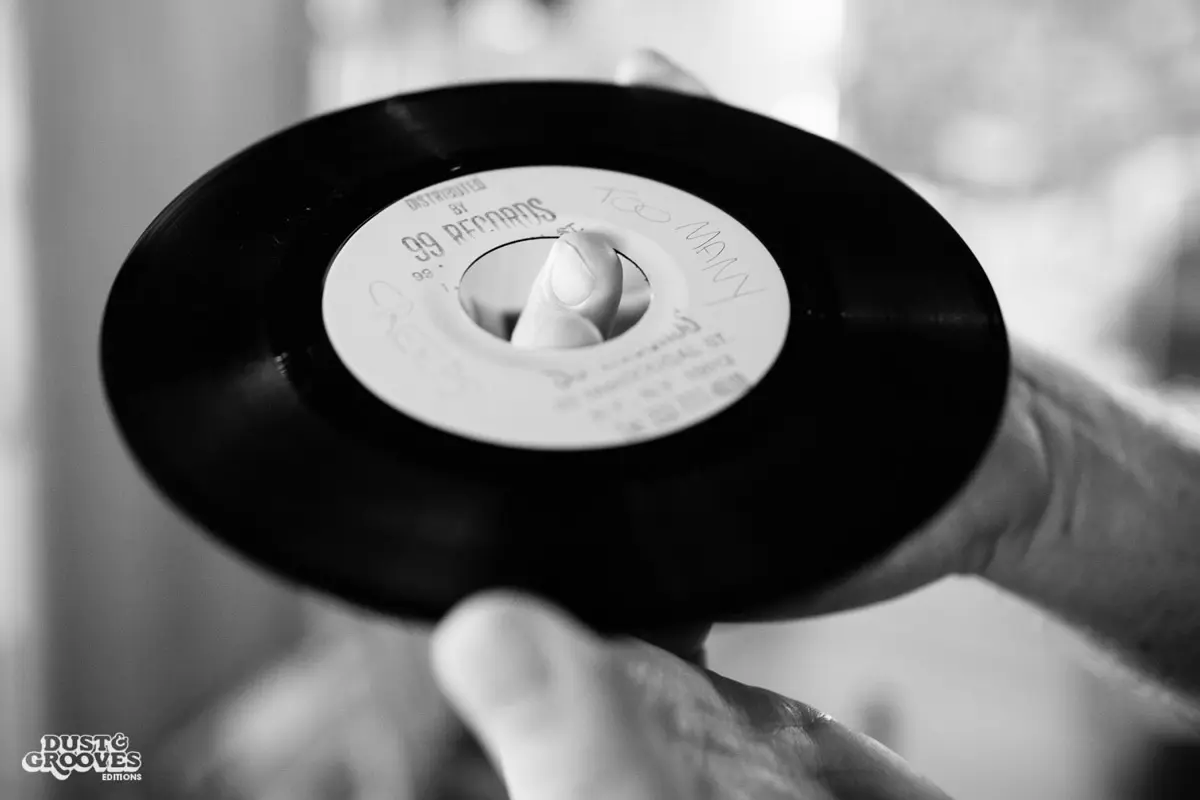
Bush Tetras – “Too Many Creeps.” “Test pressing of an early ’80s dance/punk classic on the legendary 99 label. The 99 Records store was one of the best record stores ever, and Ed Bahlman, who ran the label and store, was a real visionary.”
Do you have records you can’t get enough of, even after hearing them a thousand times?
Ramones Leave Home, Wire Pink Flag, Brian Eno Taking Tiger Mountain (By Strategy), Zombies Odessey and Oracle, La Monte Young Well-Tuned Piano, The Shaggs Philosophy of the World, Damon Song of a Gypsy, Fallen Angels It’s a Long Way Down, Velvet Underground Velvet Underground, Guided By Voices Bee Thousand, P.M Dawn. Jesus Wept, Jackson C. Frank Blues Run the Game, Fairport Convention Liege and Lief, Linda Perhacs Parallelograms, 13th Floor Elevators Easter Everywhere, Otis Redding Dictionary of Soul, Ornette Coleman Dancing in Your Head, Albert Ayler Spiritual Unity, Captain Beefheart Safe as Milk, Damned Damned Damned Damned, Pink Floyd Piper at the Gates of Dawn, Son of Bazerk Bazerk Bazerk Bazerk, The Millennium Begin, The Beatles Magical Mystery Tour (US version), Love Forever Changes. But ask me tomorrow, and you might get a completely different list.
Guided by Voices has a gift for melody and their sound is on a unique wavelength. Propeller is their first solidly great album, and there is something fantastic about the idea of the handmade covers (all completely different) housing some of the most astounding, cobbled-together-from-scraps meta-pop music ever made.
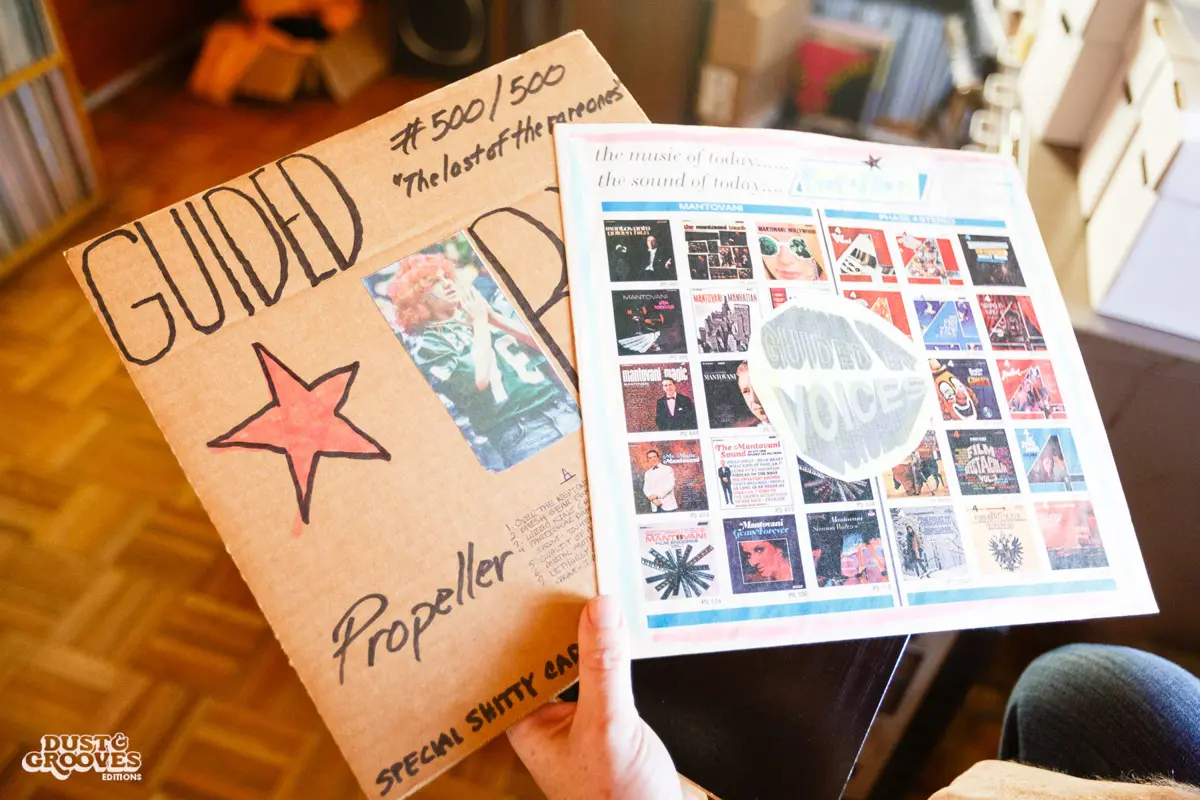
Guided by Voices – Propeller. “I went to Bob Pollard’s house in Dayton in 1994, and he gave me #500 (out of 500) of the home made copies of one of GBV’s masterpieces.”
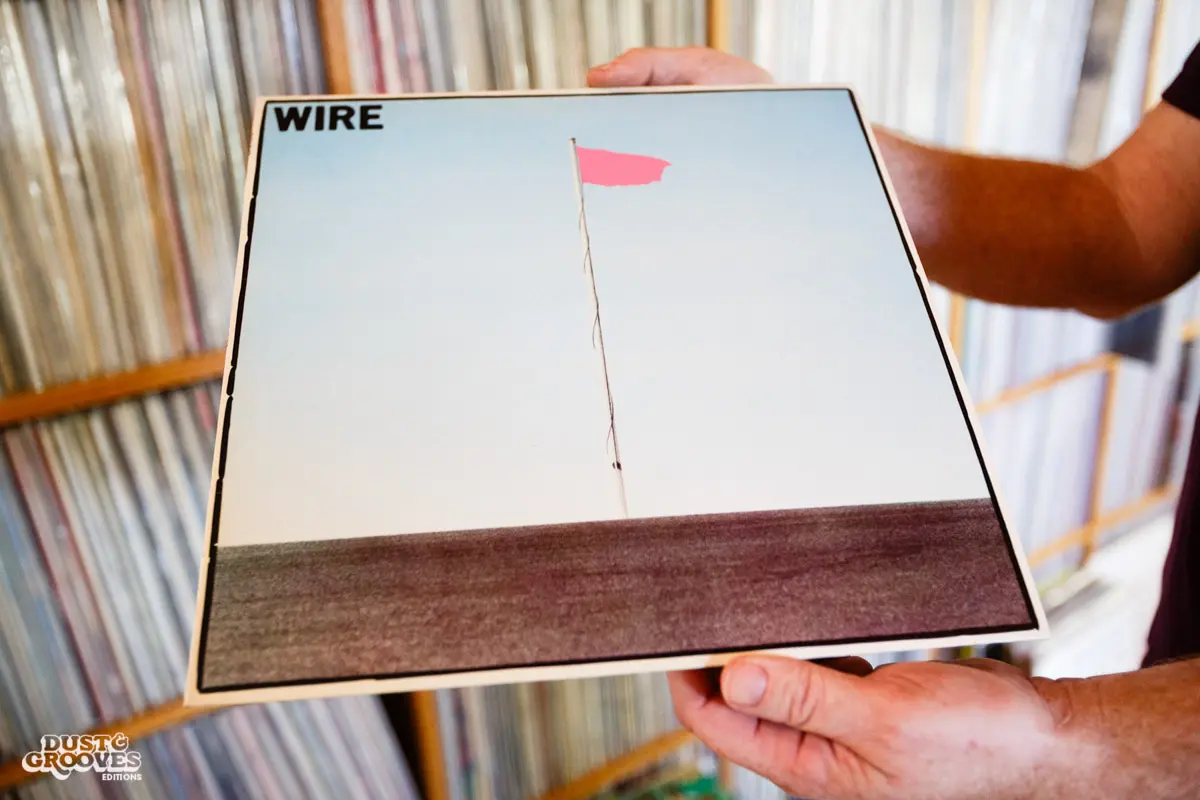
Wire – Pink Flag. “Simple music, open-ended cryptic words, and a futuristic mentality that still sounds like tomorrow. One album I never get tired of. “
The Cramps are the undisputed masters of finding truth in the garbage. People who dismiss them as just a schlock/horror band are missing the point completely. There is more humanity, insight, and profundity in one Cramps song than in the entire Radiohead oeuvre. When I first got Songs The Lord Taught Us, I was so blown away that I just played it repeatedly for two days straight. “If you can’t dig me, you can’t dig nothin’” pretty much sums it up.
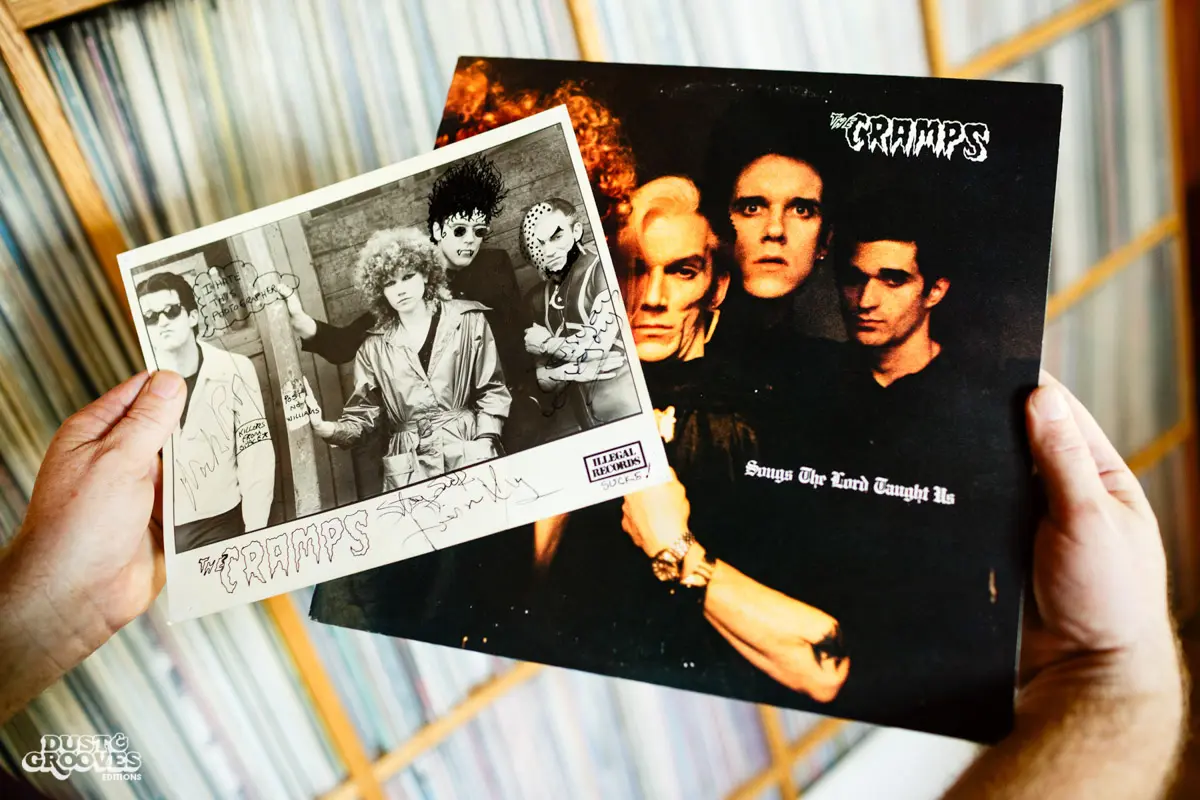
The Cramps – Songs the Lord Taught Us. “One of the greatest rock ‘n’ roll albums ever, with a signed photo that captures their unique take on things.”
Artists talk about trying to make “timeless” music. Pink Floyd’s debut has more “period” elements than almost any record ever. Yet, the songs are so good, the performances so stirring, the conception so clear and visionary that people will be listening to it for a lot longer than they’ll be playing any record made this year. You never know what will stick, but “Astronomy Domine” will always stick. This album is essential in US and UK formats, in mono and stereo. I think the record encouraged people to venture to their limits as much as any album ever made.
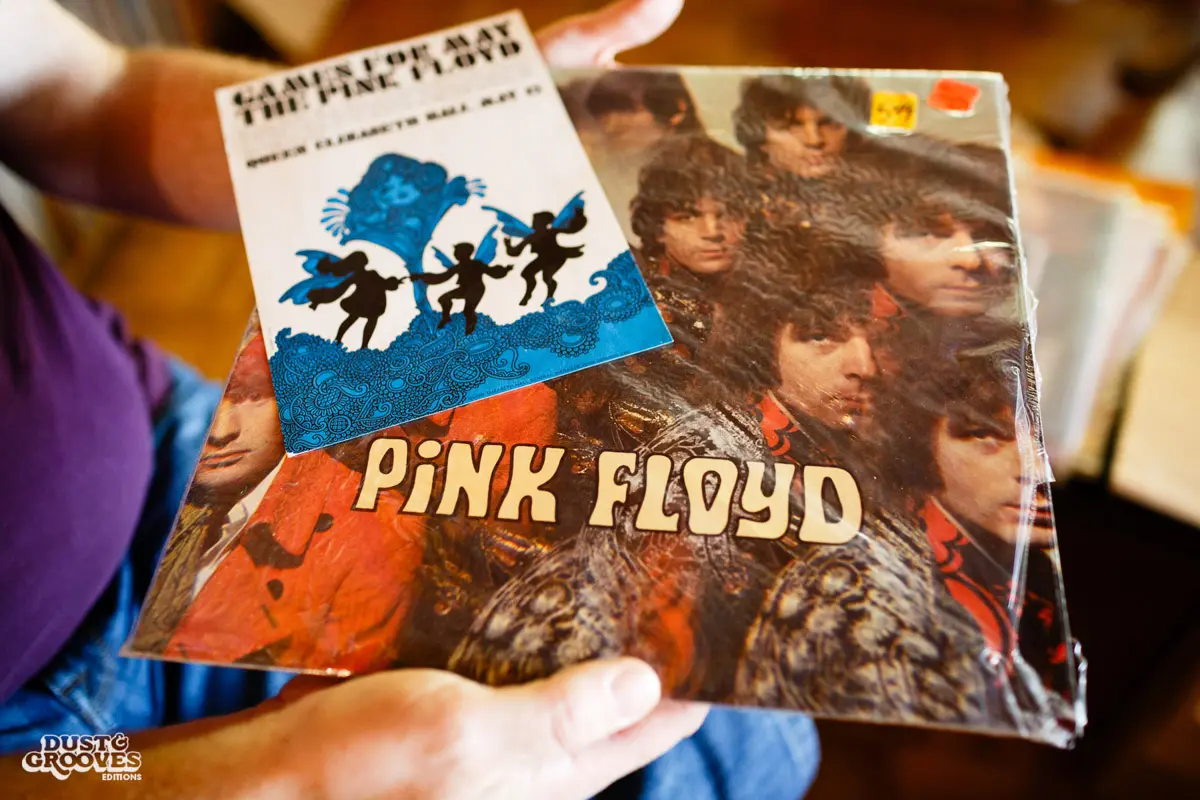
Pink Floyd – Piper at the Gates of Dawn. “Peter Jenner, who managed Pink Floyd at the beginning, gave me this flyer in the ’90s when he was managing Robyn Hitchcock. ‘See Emily Play’ was originally called ‘Games For May.’ The album itself is without peer.”
The current “vinyl resurgence” seems to have created a huge deficit in good, cheap, used records. Do you think there’s still stuff in the wild worth digging for?
There’s always great stuff that’s under the radar. It’s harder than it used to be since everyone has a phone and looks most things up, but if you get out of town, get up early, and get on the floor and squint, you’ll find something good. Lots of great music is completely unheralded, still. Buffy Sainte-Marie’s Illuminations is still a cheap record. The Nashville Teens on New World is still a cheap record. Aaron Lightman on Poppy is still a cheap record. Game Theory’s Two Steps From the Middle Ages is still a cheap record. When famous records are dried up, discover some new ones!
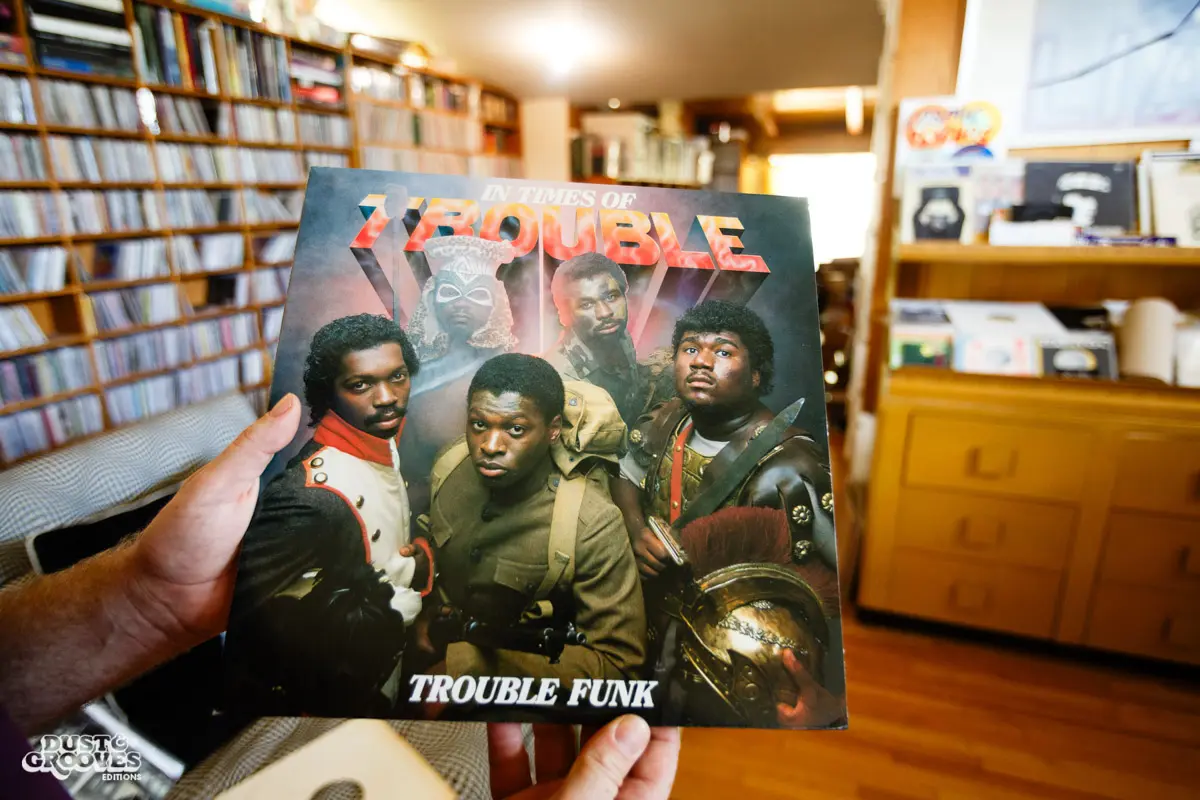
Trouble Funk – In Times of Trouble. “Go-Go is so slept-on, so many of the records are cheap and great.”
Show us some oddities…
Only in America could an itinerant hillbilly comedian claim to make over 100 records.
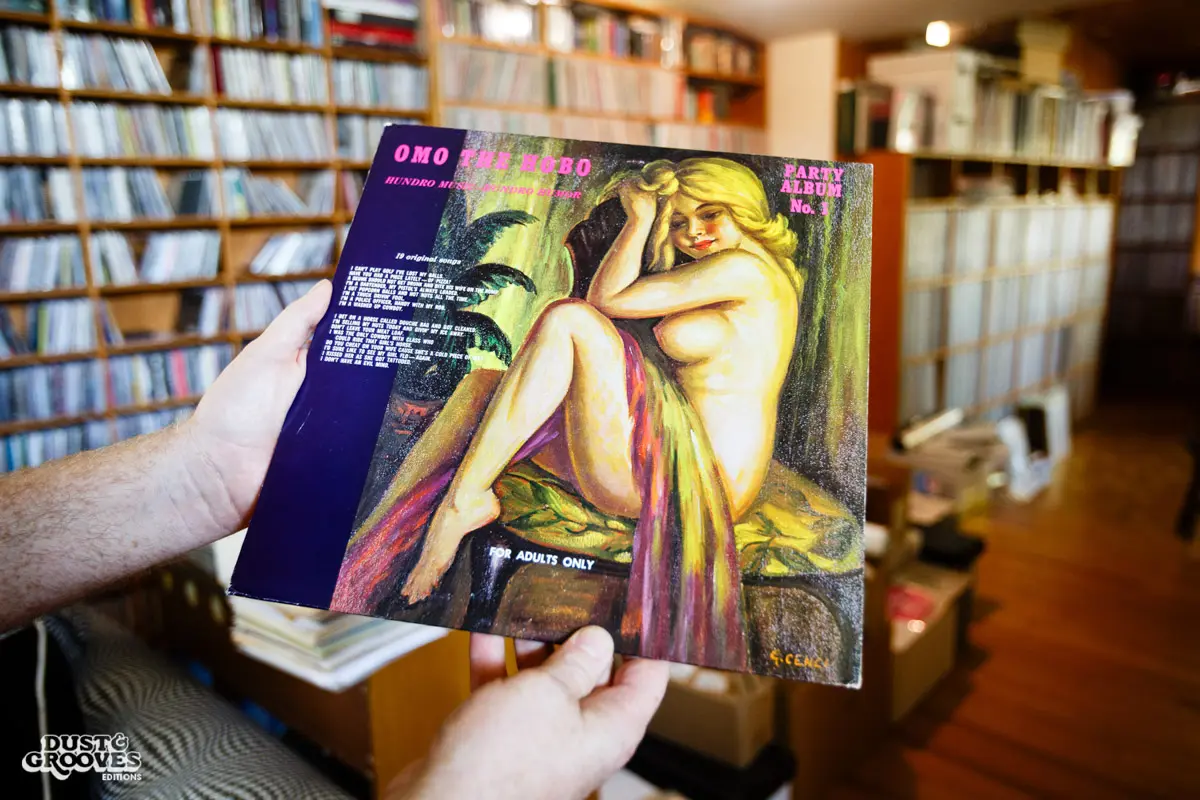
Omo the Hobo – Party Album No. 1. “An itinerant hillbilly comedian who made ‘adult’ albums and ‘children’s’ albums in amazing quantity.”
Only in America could an amoral German scientist make a record.
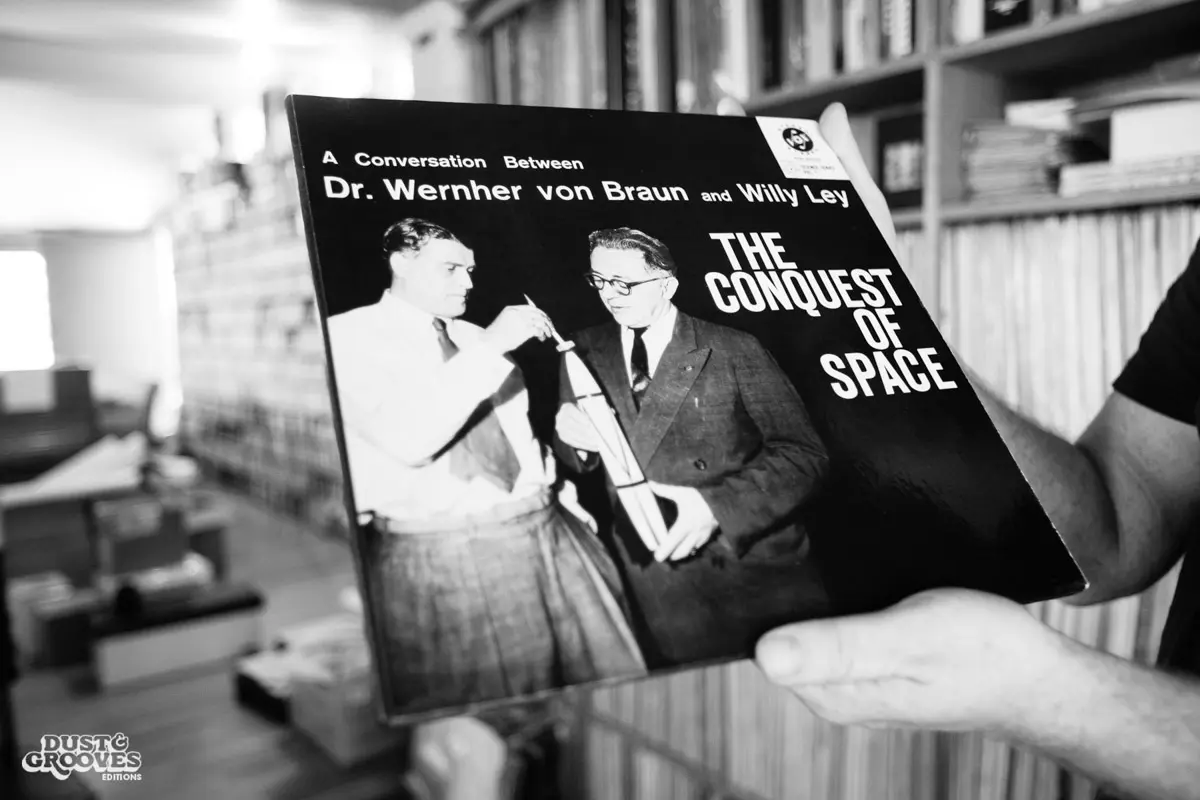
Dr. Werher Von Braun and Willy Ley – The Conquest of Space. “The notorious German scientist doesn’t sound so tough.”
Only in America could a beatnik love letter to an airport be someone’s dream.
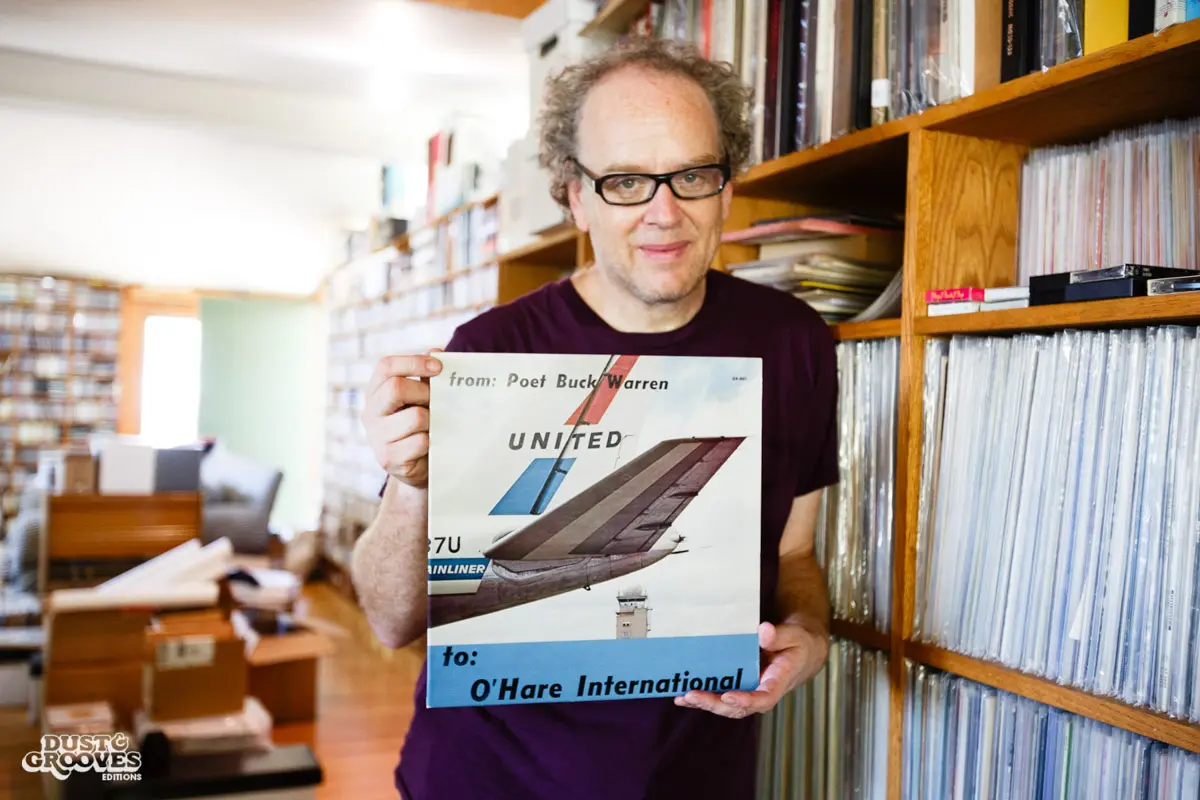
Buck Warren – From: Poet Buck Warren To: O’Hare International. “Inexplicable beat poetry storytelling with aquarian pop interludes.”
“Anyone who tells you that all the great music has already been made is just lazy.”
Let’s talk about the Ramones. Seems like they have a special place in your collection.
Before the Ramones, I thought rock was something that happened in the past. That was the first thing that was happening now that spoke to me. I took the bus from Central Vermont to New York City many times to see them in 1977 and 1978, and through them, I got into the rest of early punk and didn’t become a lawyer or a politician.
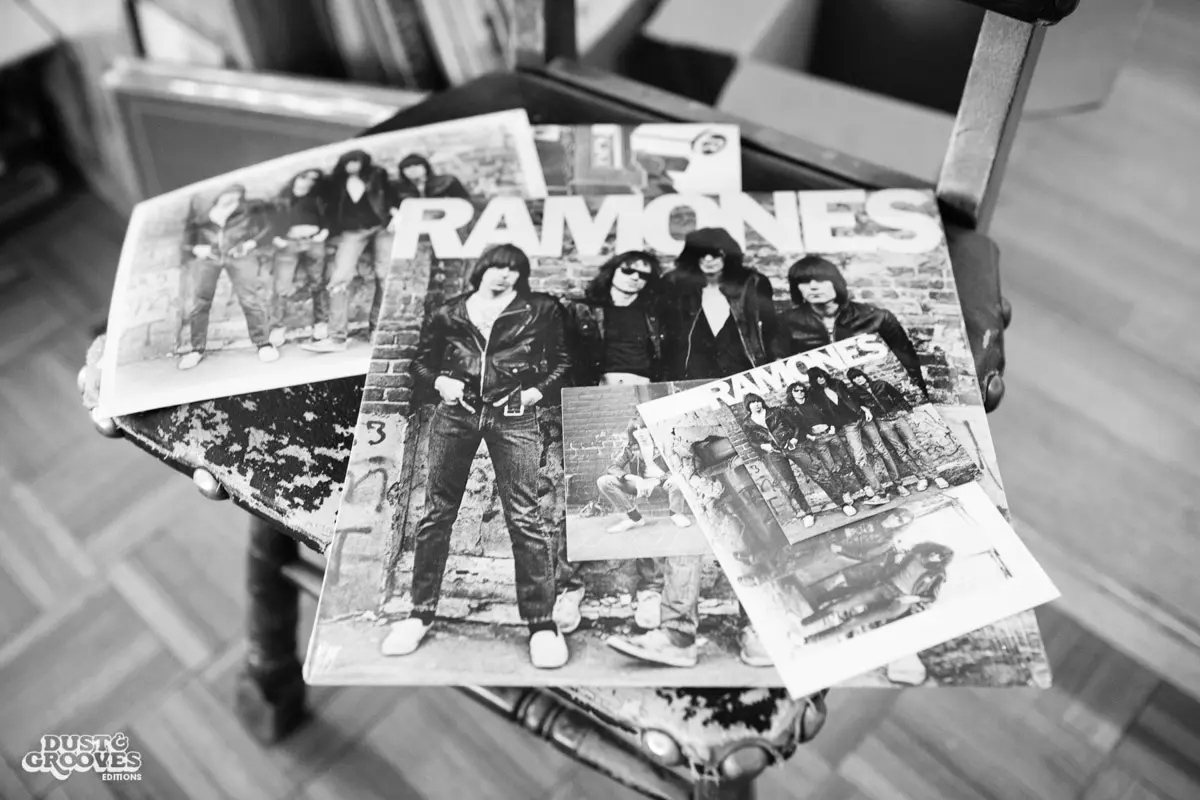
Ramones – Self-titled. The Ramones fan club was the only one I ever joined.
What are some new bands or artists that stand out to you?
So many names: Car Seat Headrest, King Gizzard and the Lizard Wizard, Young Thug, Laura Marling, Julie Byrne, Ethan Gruska, Roy Montgomery, Frank Ocean, Tame Impala, Buried Feather, Aldous Harding, Demdike Stare, and the Ty Segall universe.
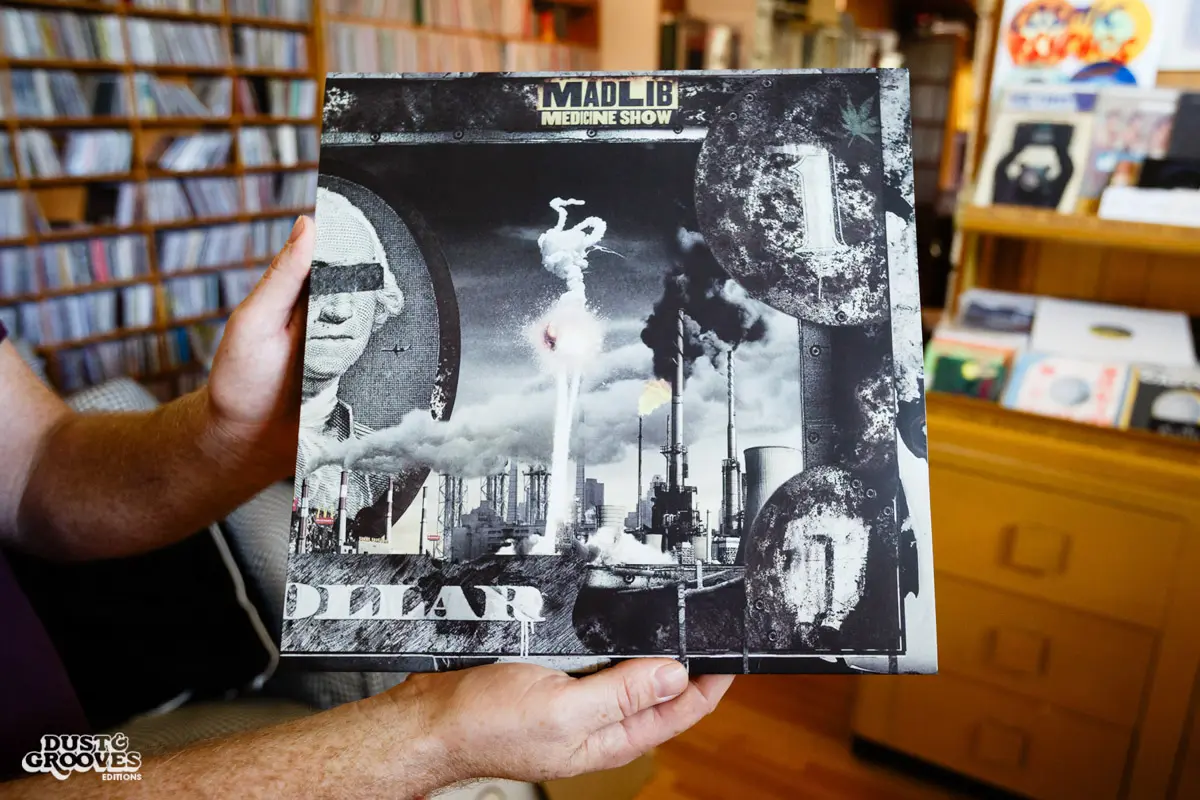
Madlib with Guilty Simpson – Before the Verdict. “Anyone who tells you that all the great music has already been made is just lazy.”
Would you consider yourself an audiophile?
I wouldn’t call myself an audiophile, as I don’t enjoy messing around with equipment. I have a Clearaudio Anniversary with two tonearms (mono and stereo, both with Benz cartridges), a Bryston amp, an Encore preamp, and PSB Stratus Gold speakers. I think about them as little as possible.
Do some records actually sound better than others, condition aside?
I’ll never give up looking for records because every copy of a record sounds different. Some are scratched, some are warped, and some are worn. If you love Pink Flag and you listen carefully enough, one copy will have more bass and another a more convincing vocal presentation. Today, I was listening to Velvet Opera’s Ride a Hustler’s Dream, and the acoustic guitars were so beautiful that I thought I was listening for the first time. I pulled out my other copy, which sounded completely different (and much worse). 45 collectors know how the music leaps from the grooves in a very different way than an LP. Still, sometimes the difference between vinyl and styrene, import and domestic, or charmed and Earthbound copy can make all the difference. The peak listening experience is still ahead of you.
Do you have advice for collectors just starting out?
Don’t buy expensive reissues when you can find worn early presses for cheap. The early presses will probably sound better and be cooler to own. Your taste should not be dictated by those who have gone before—listen for yourself. Great music and great digging exist in all genres from all eras. Some records look beat up and play great, while others look mint and play dismally. Never buy something because you think it’s valuable; if that’s your interest, buy real estate. Most people are selling something. Make sure you know what it is before you buy it.
Who would you like to see next on Dust & Grooves?
Jack Tielman, from Nanaimo, British Columbia. He owns a store called The Black Dot. He has amazing taste in rockabilly, free jazz, and trashy punk, and he’s always showing me the most bonkers records. I want to see what he keeps!
“The most important people to listen to are the young enthusiasts—you’ve got to keep that light on! “
Not many record collectors can casually say they own over 50,000 LPs; Geoffrey Weiss can. After years of working beside the biggest names in the music industry, Weiss is now spending time revisiting his collection and managing Dylan Gardner.
Edited by Sam Cohen
Dear Dust & Groovers,
For over a decade, we’ve been dedicated to bringing you the stories, collections, and passion of vinyl record collectors from around the world. We’ve built a community that celebrates the art of record collecting and the love of music. We rely on the support of our readers and fellow music lovers like YOU!
If you enjoy our content and believe in our mission, please consider becoming a paid member or make a one time donation. Your support helps us continue to share these stories and preserve the culture we all cherish.
Thank you for being part of this incredible journey.
Groove on,
Eilon Paz and the Dust & Grooves team


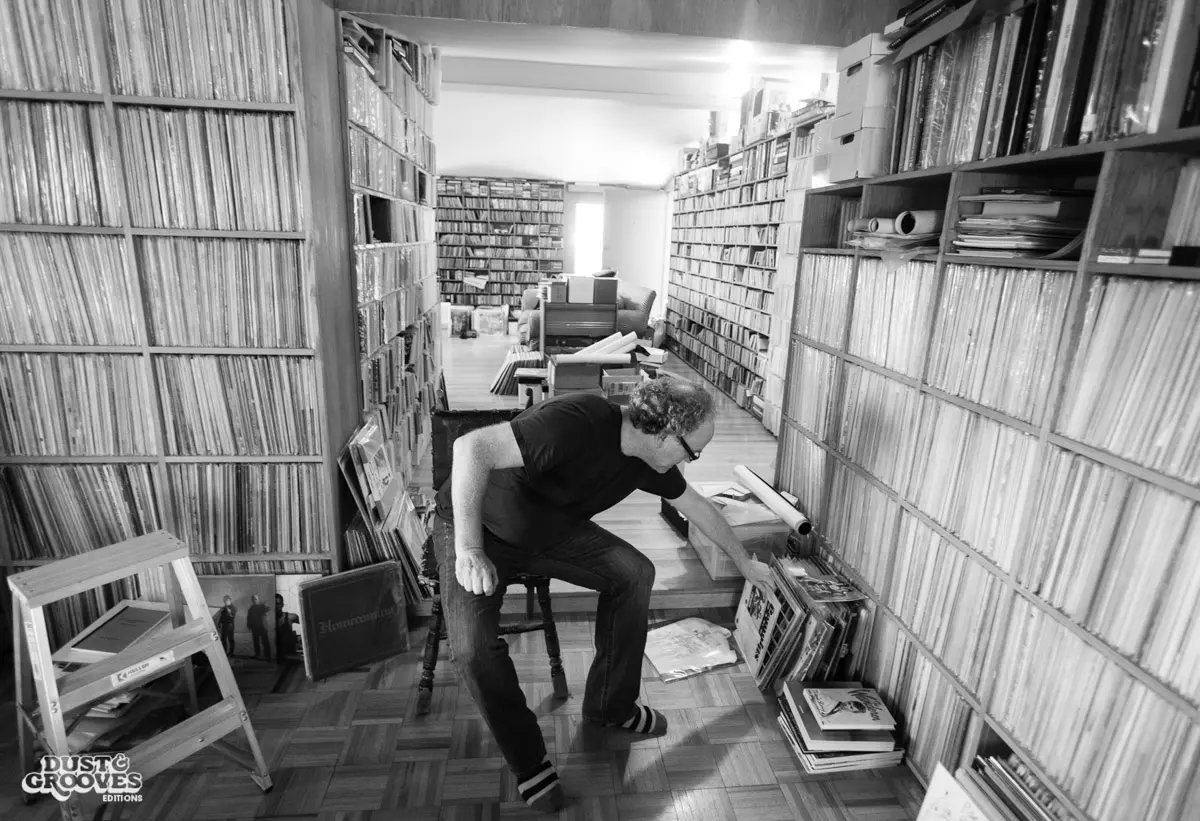
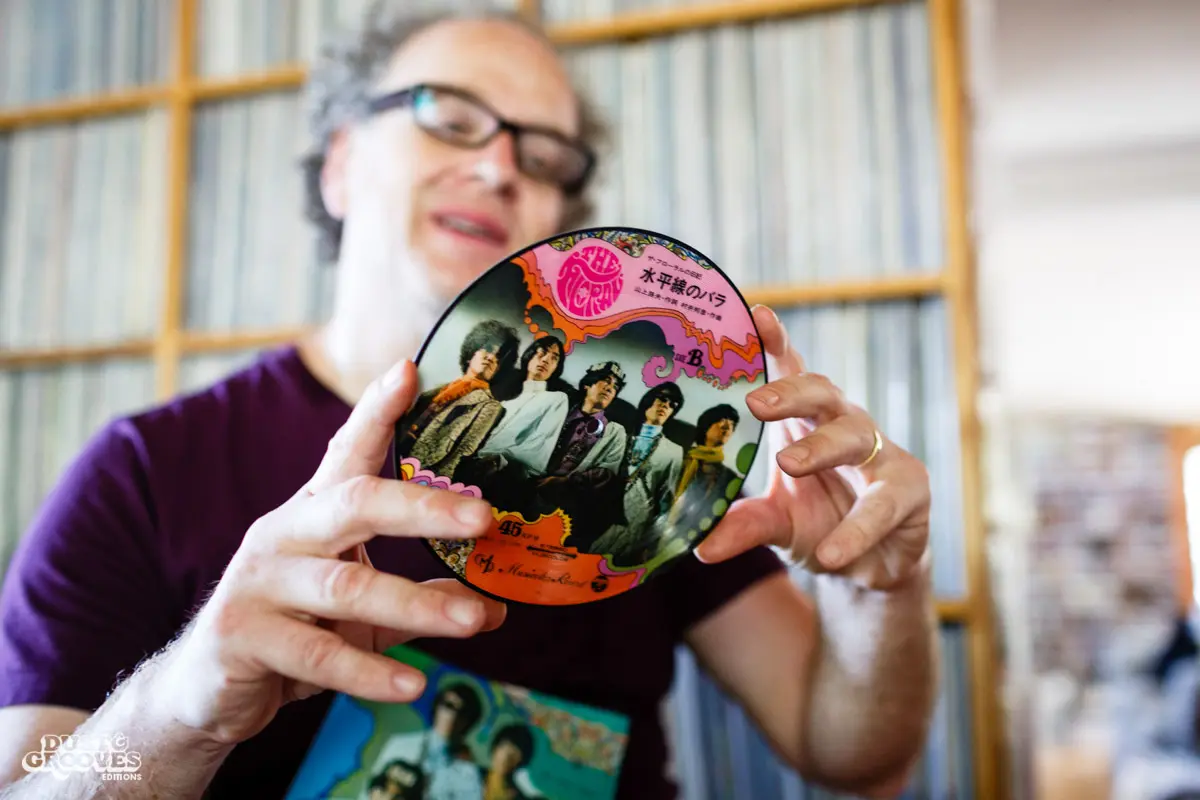
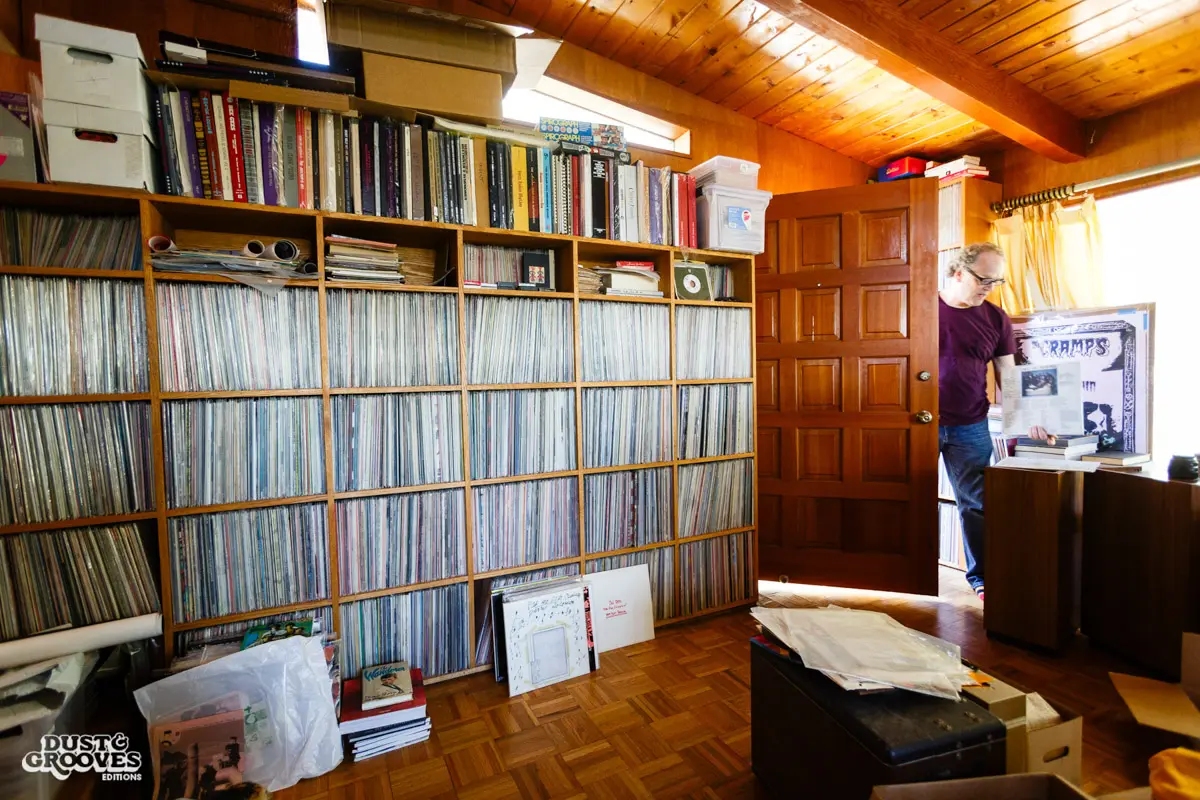
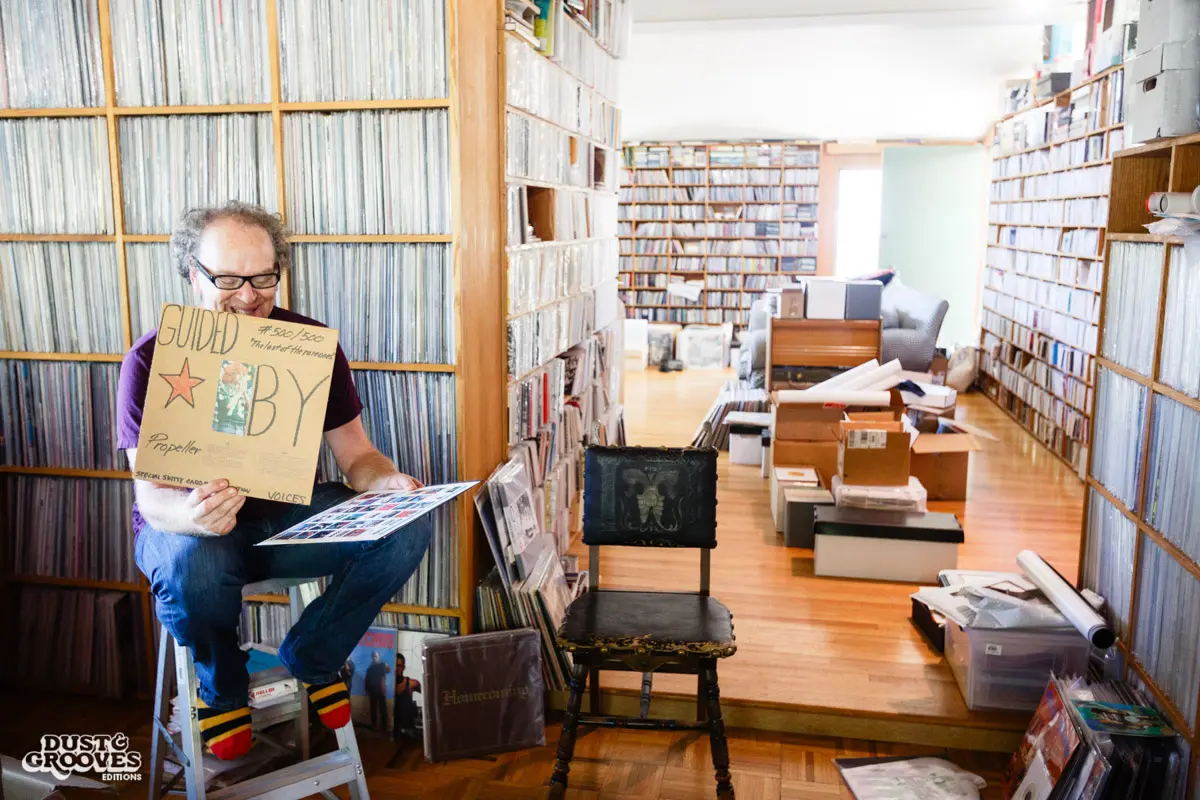
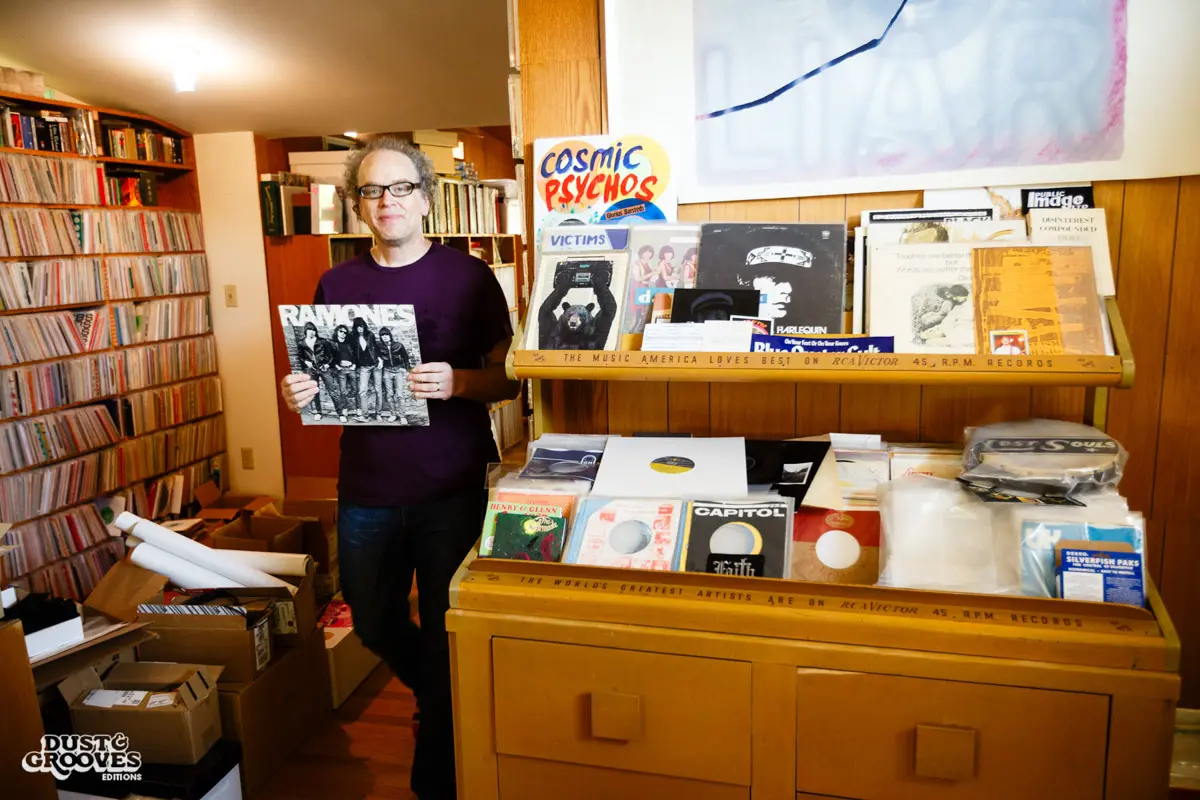
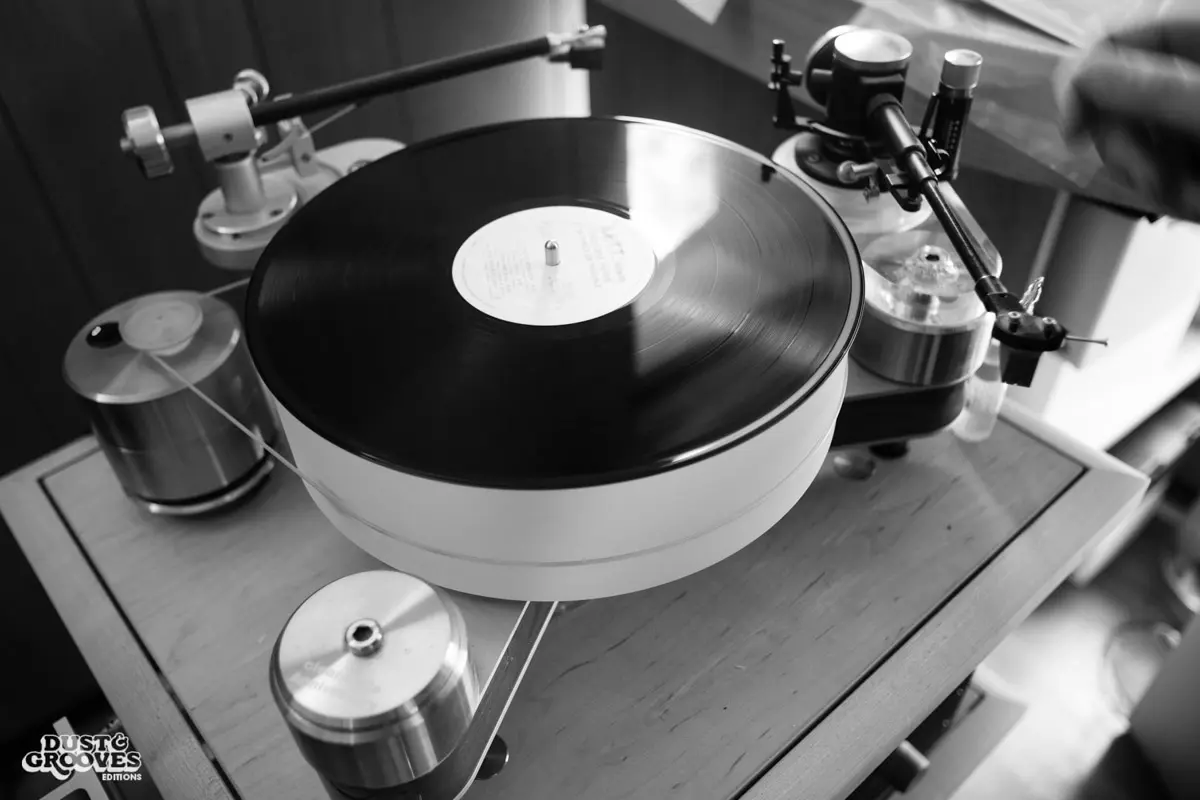
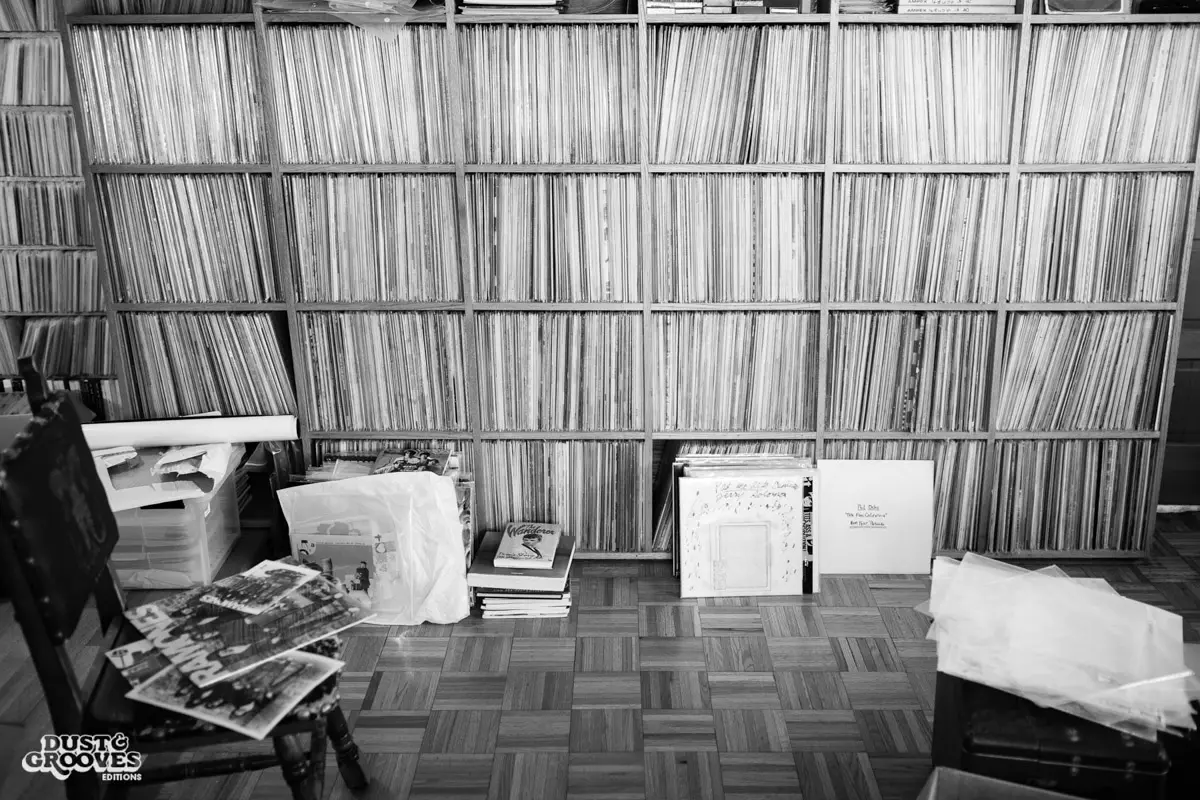
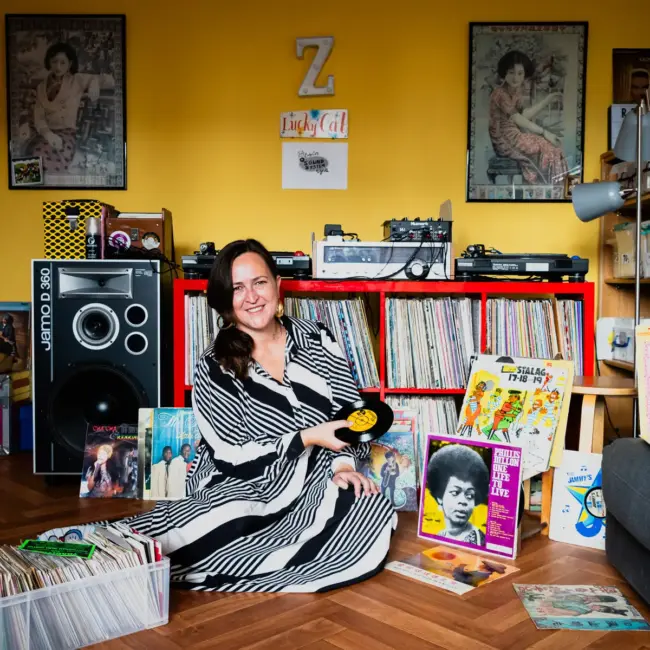
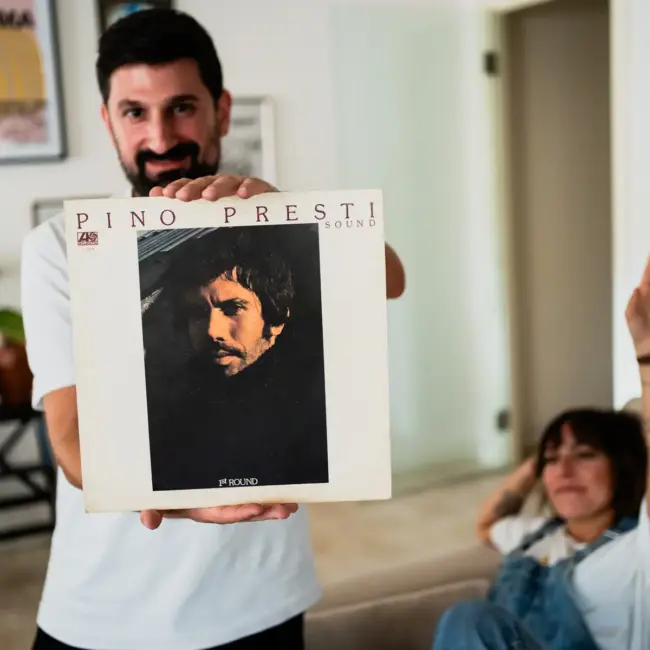
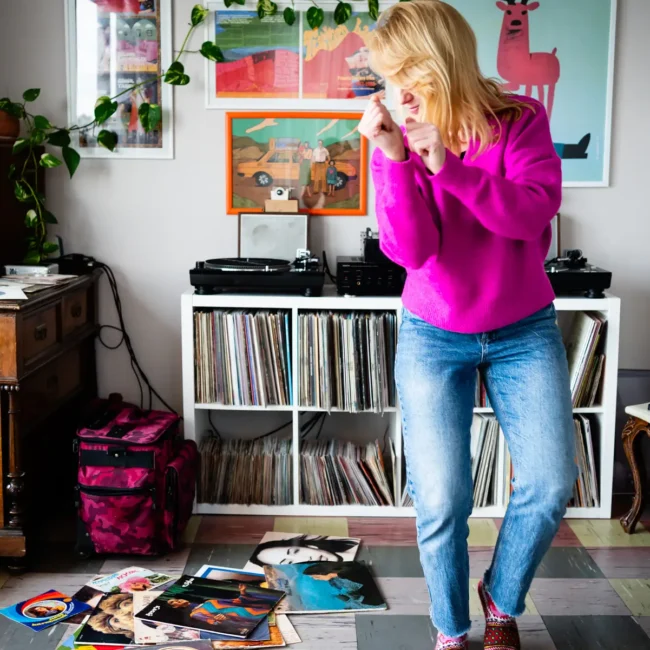
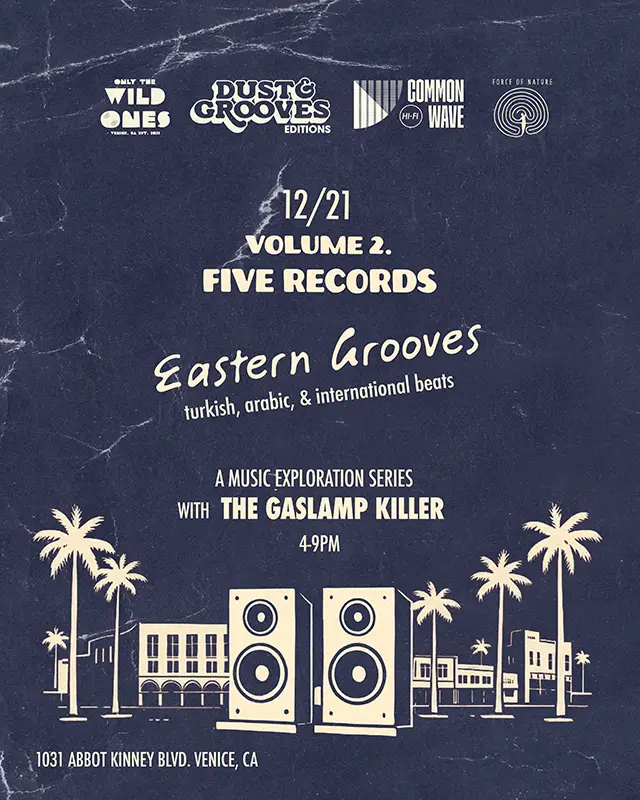
8 Comments
Douglas Venters
Very good, interesting interview. Thanks.
Andhika faisal
Great article & interview!! So inspiring!
Jacob Silverstein
This guy is serious about his business...
Snacktruck
Outstanding article about Mr. Weiss. I have heard about him and his collection for decades. I agree with him about two things in particular, first about getting original pressings of stuff vs. reissues and second about getting Jack Tielman on board here - that guy is just all around great and I bet his records are stuff of legend. Keep up the great work D&G.
JJ
Visited Geoffrey several times in the 90´s and always brought with me cool records to trade, great guy //JJ Sweden
Zeena MacLean
Geoffrey, are your parents Joan and Peter Weiss? If yes, I am a cousin of Joan's and would love to get in touch with her. Thanks in advance for a reply, Zeena MacLean [email protected] OP. S. my husband Jack has a very good Jazz/Blues/ Louis Armstrong collection.
Joop Delahaye
Geoffrey Was looking at the stereo in the background in Eilon’s book. My family emigrated from Holland by way of Australia in 1959-60. The first item we bought here in the US was a Delmonico stereo with a Telefunken turntable. Ours looks a lot like yours. It lives in my house now.
matty
pretty cool article but"dont buy reissues" is kind of a lame sentiment. of course I want an OG but if it's near impossible to find or if dude's on your level with it want bank for it, and the available reissue is *well done* and a small fraction of OG price, well...not everyone got it like that so reissue it is. that said I really wanna fuckin' hang out with and get schooled on rare shit some day.